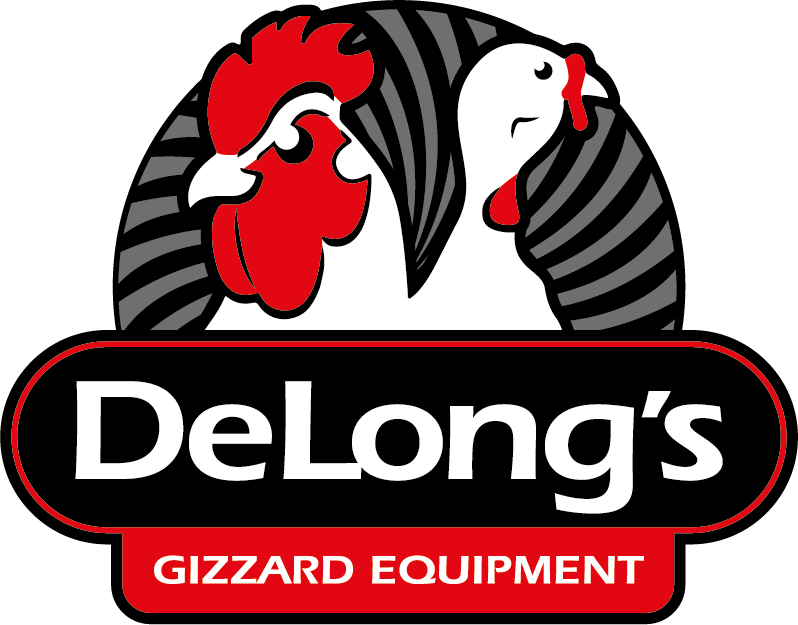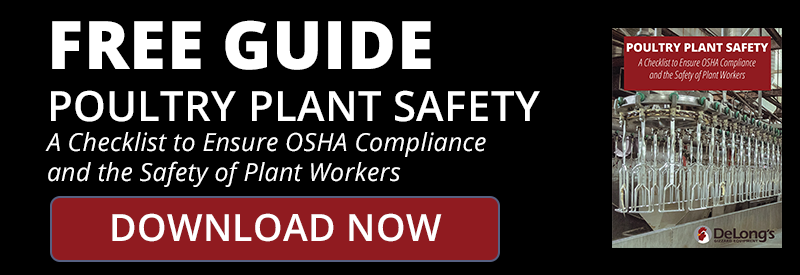
17 Jul Ergonomics Plan of Action
Working in a poultry processing environment can have its concerns when it comes to safety. The main concern of every workplace in America should be worker safety and maintaining an atmosphere that complies with all safety standards. It is the shared responsibility of the entire management staff, as well as employees to ensure OSHA protocols are met to ensure hazards are addressed, common mistakes are identified, and every worker is operating under safe conditions.
To help our customers and other industry professionals stay aware of how they can help maintain a safe workplace, we have compiled a guide that will help you understand and enforce an OSHA inspired plan of action in preventing and treating illnesses, injuries, and disorders in your workers. This guide will be based on ergonomic data used to create OSHA’s guidelines and programs that encourage a safe workplace.
What is OSHA?
OSHA is the Occupational Safety and Health Administration that assures workplaces are safe and healthy by setting standards, providing outreach, education and assistance.
The Occupational Safety and Health Act of 1970 was passed to assure safe and healthful working conditions for working men and women; by authorizing enforcement of the standards developed under the Act; by assisting and encouraging the States in their efforts to assure safe and healthful working conditions; by providing research, information, education, and training in the field of occupational safety and health.
Because of the high volume of hazards at a poultry processing facility, OSHA has strict and specific standards for the meat industries. In 1993, OSHA published its Ergonomics Program Management Guidelines for Meatpacking Plants, which recommended that employers implement an ergonomics process to identify and correct ergonomics-related problems in their worksites.
In 2004, OSHA published the first version of these guidelines, Guidelines for Poultry Processing — Ergonomics for the Prevention of Musculoskeletal Disorders. We will explore these guidelines in this blog.
What are Musculoskeletal Disorders?
There are a plethora of hazards and possible ways to injury yourself working in the poultry processing industry. However, one that is often overlooked due to the asymptomatic and nonvisible nature of the injury are musculoskeletal disorders.
We use the term MSD to refer to a variety of injuries and illnesses that occur from repeated use or overexertion, including:
- Carpal tunnel syndrome;
- Tendinitis;
- Rotator cuff injuries (a shoulder problem);
- Epicondylitis (an elbow problem);
- Trigger finger;
- Muscle strains; and
- Lower back injuries.
MSDs are strikingly common in the poultry processing industry. The incidence rate of occupational illness cases reported in this industry in 2011 and 2012 has remained high at more than five times the average for all U.S. industries. The rate of carpal tunnel syndrome, in particular, was more than three times the national average in 2012 and seven times the national average in 2011.
The culprit? Repetitive motion. Workers who performed the following tasks require the most repetitive hand manipulation and should be carefully watched not to develop carpal tunnel syndrome:
- Cutting,
- Eviscerating,
- Washing,
- Trimming,
- Deboning,
- And multiple tasks.
OSHA’s Process for Protecting Workers
According to OSHA’s Prevention of Musculoskeletal Injuries in Poultry Processing guidelines, their process for protecting workers is as follows:
- Provide Management Support
- Involve Workers
- Provide Training
- Identify Problems
- Encourage and Utilize Early Reports of Injuries
- Implement Solutions
- Evaluate Progress
OSHA’s Assistance, Services and Programs
OSHA offers help in protecting your business and your workers in the form of:
- Establishing an Injury and Illness Prevention Program;
- Providing Compliance Assistance Specialists;
- Free On-site Safety and Health Consultation Services for Small Business;
- Cooperative Programs;
- Occupational Safety and Health Training; and
- OSHA Educational Materials.
For more information about OSHA’s guidelines, and how they can help protect the wellbeing of your workers, read the in depth descriptions provided in OSHA’s Prevention of Musculoskeletal Injuries in Poultry Processing. It is always important to identify and address concerns, listen to worker feedback, and check OSHA standards as they are updates to ensure total worker safety.
DeLong’s is committed to keeping poultry processing safe and efficient and we hope that you continue to trust DeLong’s with poultry tips, tricks and important information.



